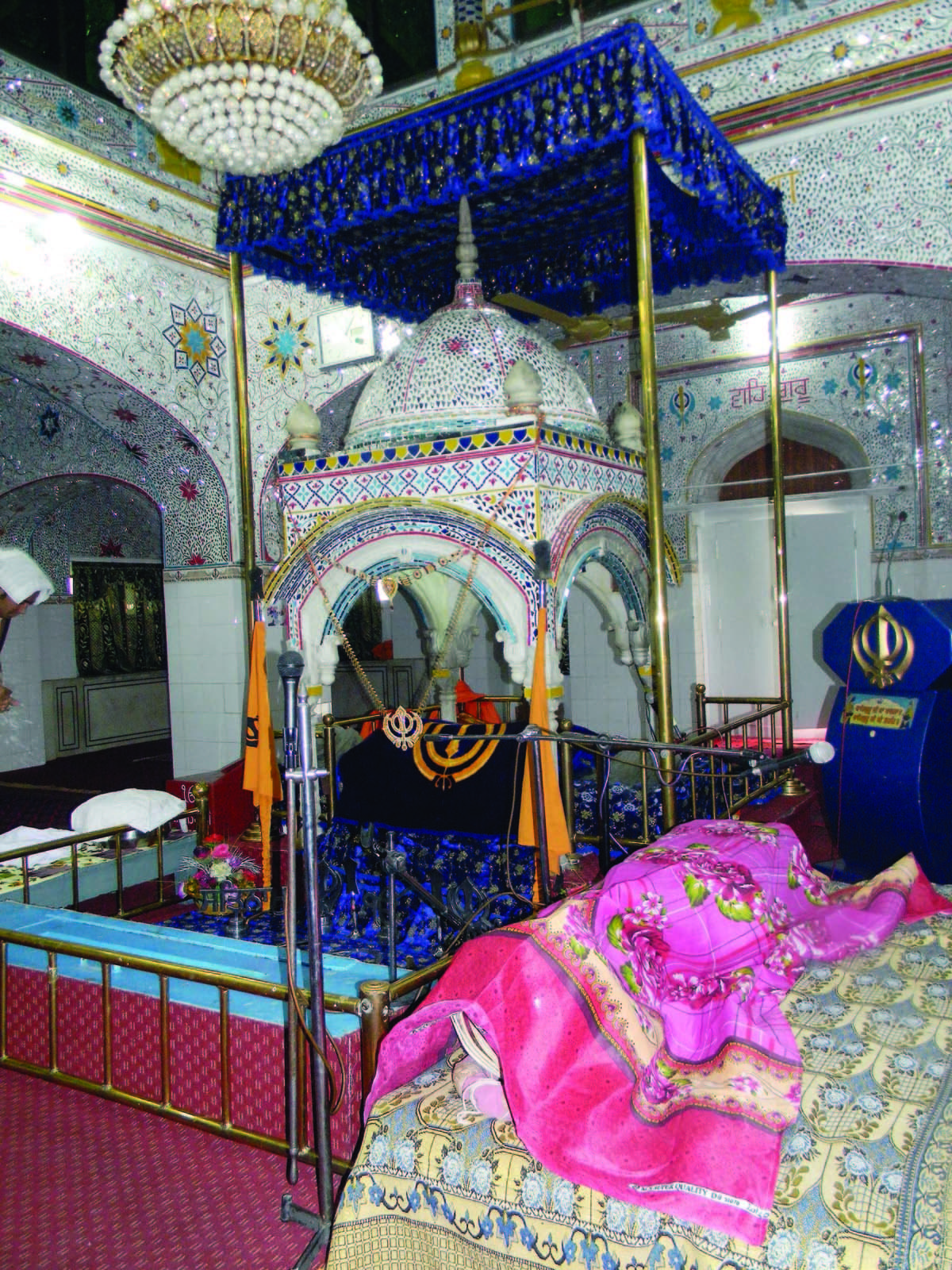
Gurdawara Panja Sahib — a symbol of peace
 |
| The façade of the temple building. |
By Amjad Iqbal
Gurdawara Panja Sahib is located in Hassanabdal, 48 kilometres from Rawalpindi. Visited by both Hindus and Sikhs for pilgrimage twice a year, the Gurdawara or temple, has been a symbol of peace for over three centuries. The word ‘Panja’ means the palm of the hand in Punjabi.
 |
| An adorned awning at the Gurdawara. |
The gurdawara’s name comes from a handprint on a rock, believed to belong to Guru Nanak, the founder of Sikh religion.
 |
| Pillars with ornate lights in the foreground and inscriptions in Gurmukhi script in the background. |
According to legend, a holy man hurled a rock towards Guru Nanak who stopped the rock with his hand, leaving an imprint on it. The holy man, upon seeing this, became Guru Nanak’s devotee. The rock with the handprint has been preserved in its original shape and can be seen by visitors today.
 |
| Fish swim in the clear water of a natural spring which flows from underneath the legendary rock. / An adorned awning at the Gurdawara. |
The site where the Gurdawara stands is considered to be one of the holiest in Sikh religion. Each year, thousands of Sikh and Hindu pilgrims visit the temple from all over the world including India. Pilgrims from across the border arrive in Hassanabdal by special trains.
 |
| Handprint on the rock, which according to legend belongs to Guru Nanak, founder of Sikh religion. |
The majestic building of the gurdawara was built by Maharaja Ranjit Singh in the 19th century. It houses a hostel for pilgrims, a courtyard, a pool and a temple.
 |
| The platform where the Sikh Holy book Guru Granth Sahib is placed for the day’s worship, underneath a canopy called palki. |
The hostel has 376 rooms and all pilgrims are given free food from the temple’s kitchen for the duration of their stay. A large dining hall was built in 2010-11 which can accommodate over 1,000 people at a time.
Published in Dawn February 15th , 2015
On a mobile phone? Get the Dawn Mobile App: Apple Store | Google Play

